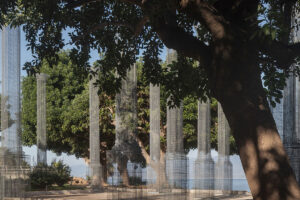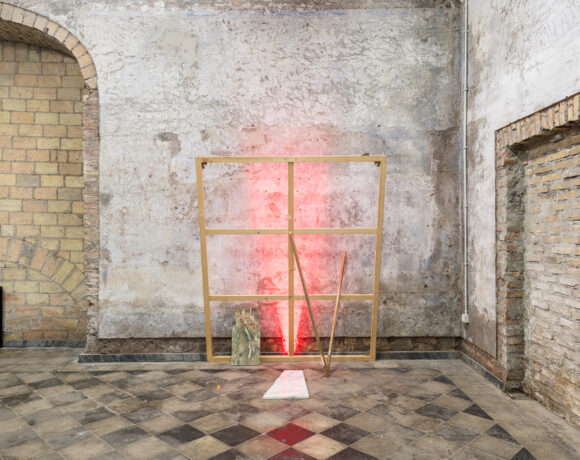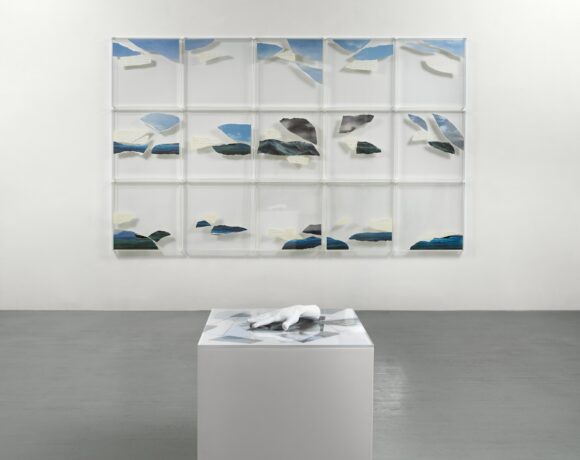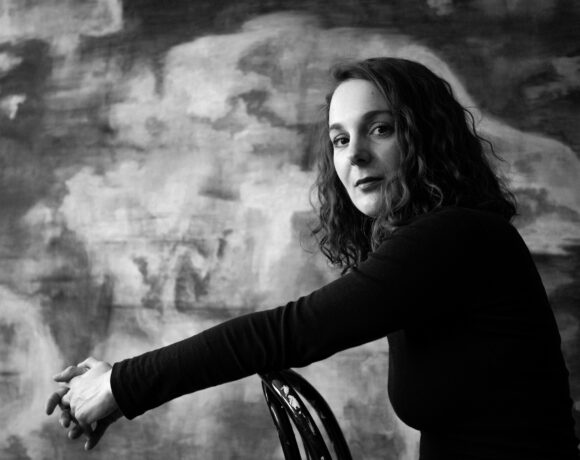Recently inaugurated, “Opera” is the second permanent installation by Edoardo Tresoldi (Cambiago, 1987) in Southern Italy. Confronting with the Stretto di Messina is the new challenge of the young Lombard artist who once again chooses Calabria after “Il collezionista di venti”, his first work in a public space.
What did it mean to inaugurate Opera in this moment of restart despite the pandemic?
The inauguration was scheduled for Spring; then it was postponed due to the epidemic. I think it is essential, in a historical moment like this, that people can take time even just to observe, listen and contemplate something new.
You were commissioned two years ago to create a monument for the Reggio Calabria seafront…
I wanted to create a monument that celebrated the daily life of the people who live in the city. My columns celebrate the daily events on the Reggio waterfront, and strongly relate to the natural elements of the Strait: Etna, Sicily and the natural phenomena that interact with space.
It is a great responsibility to deal with the magnificent view of the Strait. How did you approach and solve this aspect in the design and construction phase?
When it comes to modifying a public space, there is always a great responsibility. The space where you start working belongs to the citizens. It is then contaminated and transformed by acting on everyone’s cultural heritage.
The characteristic in your works, and in this more than ever, is represented by the contours of the work that lose definition to merge with the context as if it were still the visualization of a project rather than a concrete architectural intervention, completely completed. What is the meaning contained in these transparent and open architectures that you create?
With the transparency of the wire mesh, I am allowed to express forms through which I let the context speak. The language of the wire mesh speaks in a low voice and knows how to welcome what is around it, allowing an active fusion of the work with the place in which it is inserted. Classical language, on the other hand, is a code that celebrates the experience and sacredness of places.
What is the Genius Loci for you? Why is it important to listen to places?
Genius Loci is a different concept from the history of a place. In Opera there is no reference to the past of Reggio Calabria but a celebration of something that belongs to the contemporary life of the city. There is thus a connection with all civilizations that have created a relationship with the strait not historically but in purity.
The part played by time and place is easily understood in Opera. Which of the two is more important?
Opera lives changing over time and with the place where it is located. Being a permanent installation, it builds a long relationship with the people who live in the area: the succession of the seasons, the ships that cross the strait, those who arrive for the holidays and those who leave, those who remain even during the winter, the changes in city, the generations that pass. Opera is a memory, but also a change for the people who live it.
What is the role of the spectator in front of Opera and in general of your environmental installations?
The user of my works is generally placed in the circumstance of seeking visual poetics; is a user on the go. In the case of Opera, the colonnade creates multiple perspective corridors and allows the installation to become changeable based on how it is experienced, how it is crossed and from what point it is observed.
You have carried out several interventions in Calabria and Southern Italy: Il collezionista di venti, Thinking, Locus, the exceptional wire mesh basilica in Siponto and now a second permanent project as Opera. Is there a particular reason?
I feel a very special connection with the South and every time I go back I feel at home.
It is not the first time that your installations have hosted musical performances or poetic performances. On this occasion Brunori Sas, Franco Armino, Teho Teardo animated Opera for the opening. Is all this something that comes from your beginnings in the field of scenography?
I have always believed that visual art embraces multiple disciplines: from poetry to music. Opera has been enriched by artists that I respect very much, it is a story with several voices. Surely the scenography taught me to work in different artistic fields, through which I learned to believe in a multiple art, constantly looking for inspirations and influences.
Are there any authors who have influenced your poetics?
One of my first points of reference is Christo, both at a conceptual level and for the respectful approach in relating to places. I also respect him because he has achieved goals that seemed impossible to achieve. Another artist who stimulates my imagination is Theo Jansen, who manages to perfectly combine engineering methods and artistic processes.
There was no lack of criticism and controversy surrounding Opera. How did you experience all this?
There have been some criticisms concerning the political sphere and the social dynamics of the territory that I can understand. All this, however, doesn’t belong to the artistic sphere and affects me relatively.




Per tutte le foto: Edoardo Tresoldi “Opera”. Ph © Roberto Conte, courtesy Città di Reggio Calabria
Antonella Palladino, after graduating in Conservation of Cultural Heritage, continued her education at Fondazione Morra and Pan. She currently lives in Pavia and she is a professor of art history.






NO COMMENT